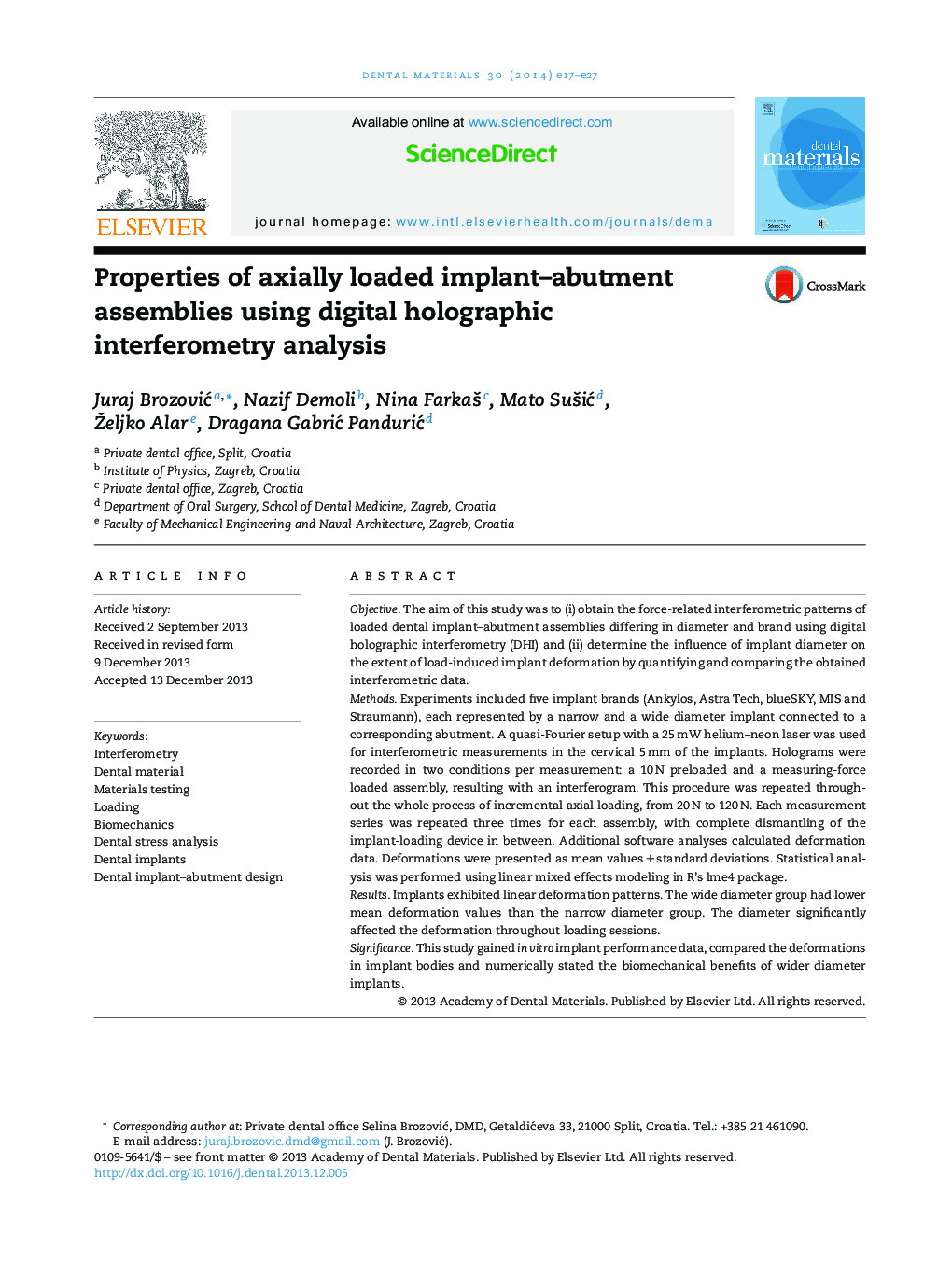| Article ID | Journal | Published Year | Pages | File Type |
|---|---|---|---|---|
| 1421071 | Dental Materials | 2014 | 11 Pages |
ObjectiveThe aim of this study was to (i) obtain the force-related interferometric patterns of loaded dental implant–abutment assemblies differing in diameter and brand using digital holographic interferometry (DHI) and (ii) determine the influence of implant diameter on the extent of load-induced implant deformation by quantifying and comparing the obtained interferometric data.MethodsExperiments included five implant brands (Ankylos, Astra Tech, blueSKY, MIS and Straumann), each represented by a narrow and a wide diameter implant connected to a corresponding abutment. A quasi-Fourier setup with a 25 mW helium–neon laser was used for interferometric measurements in the cervical 5 mm of the implants. Holograms were recorded in two conditions per measurement: a 10 N preloaded and a measuring-force loaded assembly, resulting with an interferogram. This procedure was repeated throughout the whole process of incremental axial loading, from 20 N to 120 N. Each measurement series was repeated three times for each assembly, with complete dismantling of the implant-loading device in between. Additional software analyses calculated deformation data. Deformations were presented as mean values ± standard deviations. Statistical analysis was performed using linear mixed effects modeling in R's lme4 package.ResultsImplants exhibited linear deformation patterns. The wide diameter group had lower mean deformation values than the narrow diameter group. The diameter significantly affected the deformation throughout loading sessions.SignificanceThis study gained in vitro implant performance data, compared the deformations in implant bodies and numerically stated the biomechanical benefits of wider diameter implants.
